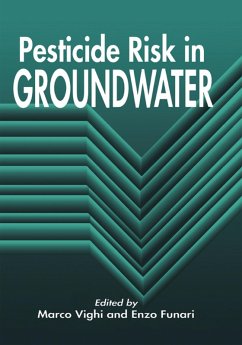Pesticide pollution of groundwater results from agricultural practices, the properties of the substance and its behavior in the soil environment, and the characteristics of aquifers and their vulnerability. Pesticide Risk in Groundwater provides an overview of the main issues concerning pesticide pollution of groundwater worldwide.
The book is divided into five sections. Section I reviews experimental data of groundwater monitoring to indicate the extent of the problem on a global basis. Based on this evaluation, herbicides are examined in depth. Section II describes predictive approaches to estimate the distribution and fate of pesticides, and includes a chapter devoted to hydrogeological aspects affecting the vulnerability of aquifers. The third section evaluates pesticides in relation to their toxicology. It critically examines the criteria and procedures by the World Health Organization (WHO) and the U.S. Environmental Protection Agency (EPA) to define quality objectives, and compares the monitoring data on pesticides in groundwater with their quality objectives. Section IV evaluates various strategies to control and prevent groundwater pollution problems. Different water treatment options are described from a technical and economic point of view. The main preventative actions include the chemical approach, the agronomic approach, and the land use approach. The final section reviews the state of the art of drinking water regulations in the EEC, the United States, and other OECD countries. The author describes the economic implications of groundwater pollution and its control and exemplifies with a real case study.
The book is divided into five sections. Section I reviews experimental data of groundwater monitoring to indicate the extent of the problem on a global basis. Based on this evaluation, herbicides are examined in depth. Section II describes predictive approaches to estimate the distribution and fate of pesticides, and includes a chapter devoted to hydrogeological aspects affecting the vulnerability of aquifers. The third section evaluates pesticides in relation to their toxicology. It critically examines the criteria and procedures by the World Health Organization (WHO) and the U.S. Environmental Protection Agency (EPA) to define quality objectives, and compares the monitoring data on pesticides in groundwater with their quality objectives. Section IV evaluates various strategies to control and prevent groundwater pollution problems. Different water treatment options are described from a technical and economic point of view. The main preventative actions include the chemical approach, the agronomic approach, and the land use approach. The final section reviews the state of the art of drinking water regulations in the EEC, the United States, and other OECD countries. The author describes the economic implications of groundwater pollution and its control and exemplifies with a real case study.
Dieser Download kann aus rechtlichen Gründen nur mit Rechnungsadresse in A, B, BG, CY, CZ, D, DK, EW, E, FIN, F, GR, HR, H, IRL, I, LT, L, LR, M, NL, PL, P, R, S, SLO, SK ausgeliefert werden.


